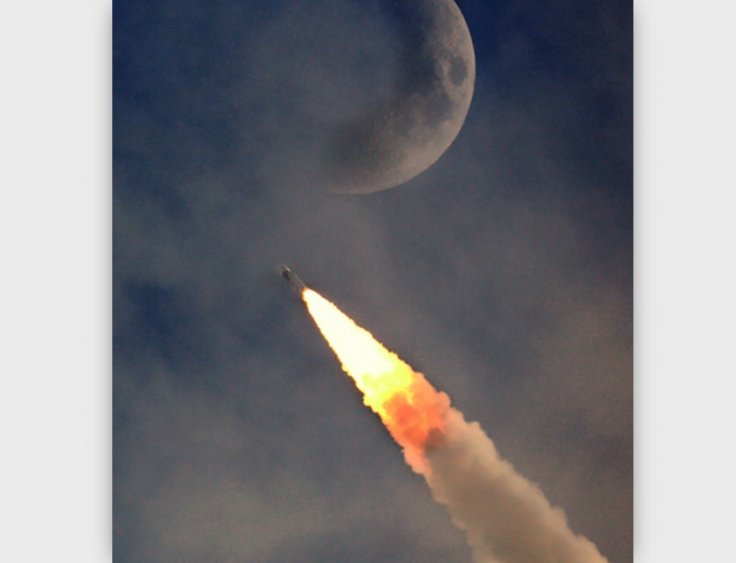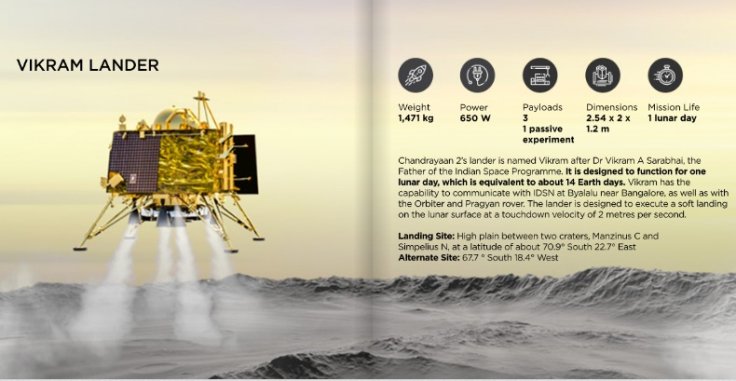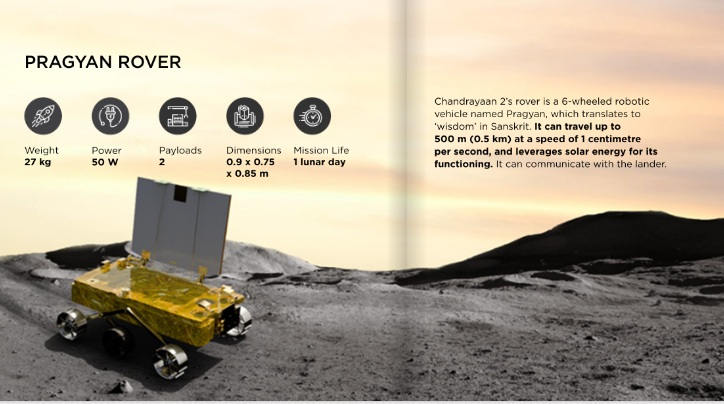
India's moon mission Chandrayaan 2 detached its landing module on Monday successfully, ahead of the next two key deorbit (orbit-lowering) manoeuvres scheduled on Tuesday and Wednesday, September 3 and 4, respectively.
The landing module of the Indian Space Research Organisation's second mission to the moon, Chandrayaan 2, has two componenets -- the Vikram lander and Pragyan rover -- which are scheduled to land on the surface of moon on September 7. Detached from the main orbiter, the landing module is currently orbiting the moon in an elliptical orbit, similar to that of the orbiter, passing over the lunar poles at a distance of roughly 100 km from the surface.
The planned soft-landing of the lander and rover on the moon's surface will be attempted at 1.55 am IST on Saturday, September 7. ISRO is planning a live stream from its control room at the Satellite Control Centre (SCC) in Bengaluru, during the soft landing stage, which its chairman K. Sivan has described as "15 minutes of terror"owing to the complexity.
The orbiter will keep its orbit to maintain a surveillance on Vikram's landing site at the moon's South Polar region. "While there, we will also explore discoveries made by Chandrayaan 1, such as the presence of water molecules on the Moon and new rock types with unique chemical composition. Through this mission, we aim to: Expand India's footprint in space; Inspire a future generation of scientists, engineers and explorers; and Surpass international aspirations," said ISRO.

Science experiments
Chandrayaan-2 is expected to study of topography, seismography, mineral identification and distribution, surface chemical composition, thermo-physical characteristics of top soil and composition of the tenuous lunar atmosphere. The Orbiter payloads will conduct remote-sensing observations from a 100 km orbit while the Lander and Rover payloads will perform in-situ measurements near the landing site.
A detailed 3 dimensional mapping of the lunar regolith will be done and measurements on the near surface plasma environment and electron density in the Lunar ionosphere will be studied. Thermo-physical property of the lunar surface and seismic activities will be measured, while water molecule distribution will be studied using infra red spectroscopy, synthetic aperture radiometry and polarimetry as well as mass spectroscopy techniques, said ISRO.

(Source: ISRO)









